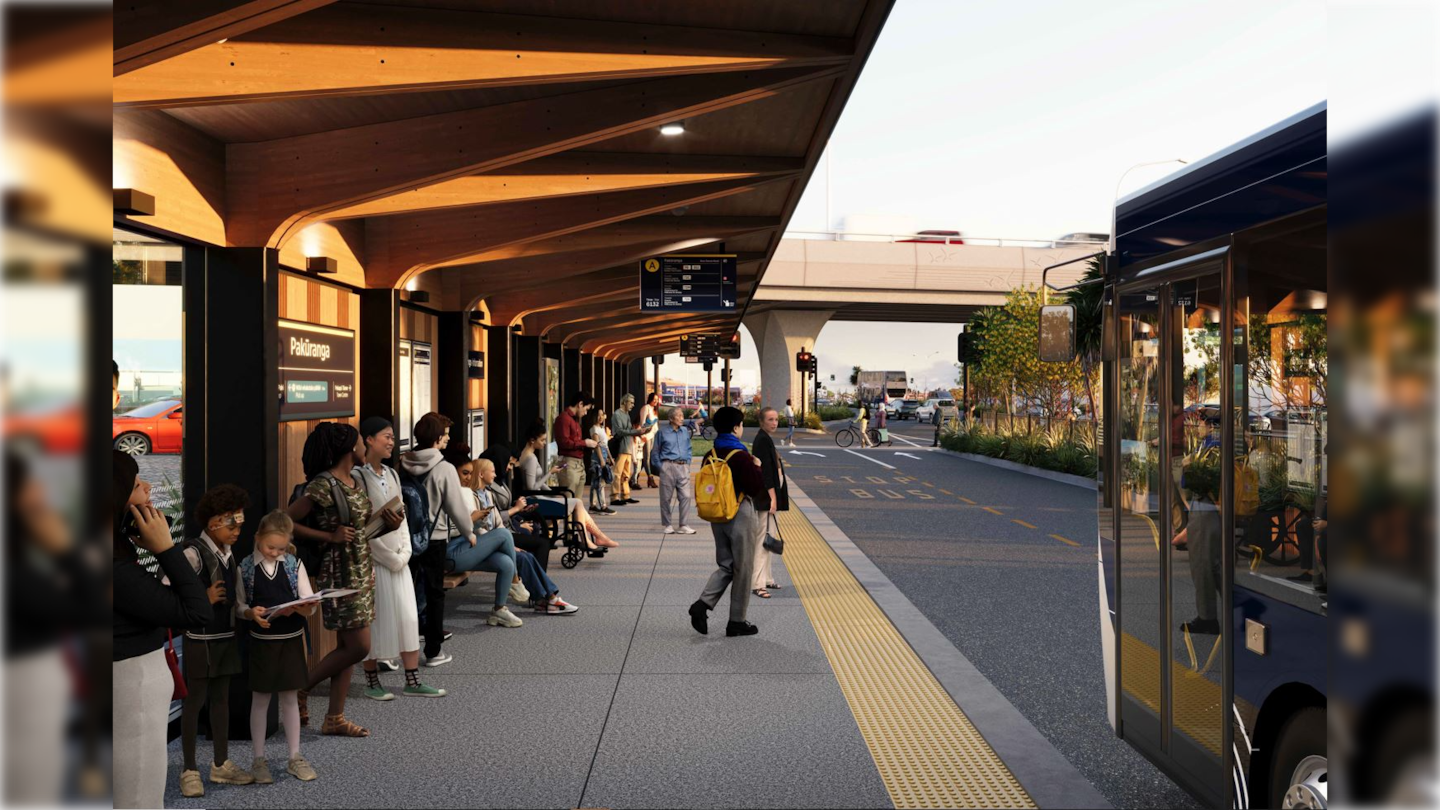Auckland Transport says it is honoured to have been gifted reo Māori names for the Eastern Busway by Ngāi Tai ki Tāmaki and Ngāti Whanaunga.
The Eastern Busway will bring rapid public transport to east Auckland and includes four new bus stations and three new structures, each of which will be given reo Māori names.
The 7km busway will span from Panmure to Botany. The four new stations include:
- Pakūranga in the town’s centre;
- Te Taha Wai named to signify the riverbanks of Te Wai o Taiki (Tāmaki River), which will be near Edgewater College and Shopping Centre;
- Koata will be by Riverhills Park and the name relates to a part of the Tī Rākau, Aotearoa’s native cabbage tree, which is found in the Pakūranga area;
- Pōhatu station will be in Burswood and the name means stone or rocks and references the rock formation in the Tāmaki estuary, which Ngāi Tai ki Tāmaki acknowledges as the perished tūrehu and patupaiarehe.
The structures include:
- Rā Hihi meaning sun’s rays and will be the name for the flyover being built above Reeve’s Road in Pakūranga to reduce congestion and improve the flow of traffic, which is planned to open in 2026.
- Tī Rākau is the name for the new bridge that will be beside Tī Rākau Drive.
- Taupaepae will be the name for the bridge joining Tī Rākau Drive and Burswood. The name means to meet or escort your visitors which is intended to represent the manaakitanga to guide and transport the community.
“Our partnership with AT has enabled us to revive ancient stories and restore the cultural identity to the local landscape through te reo Māori naming and mahi toi (artwork) design,” Zaelene Maxwell-Butler of Ngāi Tai ki Tāmaki says.
Auckland Transport’s director of infrastructure and place, Murray Burt, says the Eastern Busway “is a hugely significant project for this part of Auckland and it’s an honour to have been gifted these names which tell the story of the area we’re serving.
“We expect 18,000 people will be travelling through these bus stations every day after the Eastern Busway is complete. Rā Hihi, Tī Rākau and Taupaepae will be real assets to East Auckland. These are names the community will soon become very familiar with as progress on the Eastern Busway continues and they are able to enjoy quicker, easier journeys.”
The first stage of the Eastern Busway between Panmure and Pakūranga opened in December 2021 and Burt says this has carried more than 8.5 million passenger trips since opening.
Pakūranga - the origin of the name
The name Pakūranga comes from the name Te Pakūranga Rā Hihi, which means ‘The Battle of the Sun’s Rays’.
The battle started from the forbidden love between the children of two tūrehu and patupaiarehe chiefs.
Hinemairangi was the tupuna of Ngāi Tai ki Tāmaki and the daughter of a Tūrehu chief called Kōiwirki from Te Ngāherehere o Kohukohunui (Hunua-Papakura area). Her star-crossed lover was Tamaireia, the son of Pūtere, a Patupaiarehe chief from Te Waonui a Tiriwa (Waitakere Ranges).
Kōiwiriki led his war party to the maunga Ōhuiarangi/Pigeon Mountain which was named after a tupuna wahine of Ngāi Tai ki Tāmaki.
This is where they fought against Pūtere and his war party and the battle raged fiercely and Kōiwiriki decided on another tactic.
He urged his tohunga to chant an incantation asking Tamanuiterā, the sun, to rise earlier on the eastern horizon and, by doing so, the heat of sun’s rays annihilated the patupaiarehe.
The battle went on and Pūtere retaliated, driving Kōiwiriki and his warriors back to Kohukohunui.
When the battle was over they realised Hinemairangi was also caught in the rays of Tamanuiterā and was turned to stone.
The loss of Hinemairangi was felt deeply by the people and the marks from the fires that scorched the earth and their people became known as ‘Te Iwi Hunua’ - the scorched tribe.
Hinemairangi rests in the inter-tidal zone of Pōhaturoa where she is caressed each day by the waters of Te Marae o Tai at Maraetai Beach.



